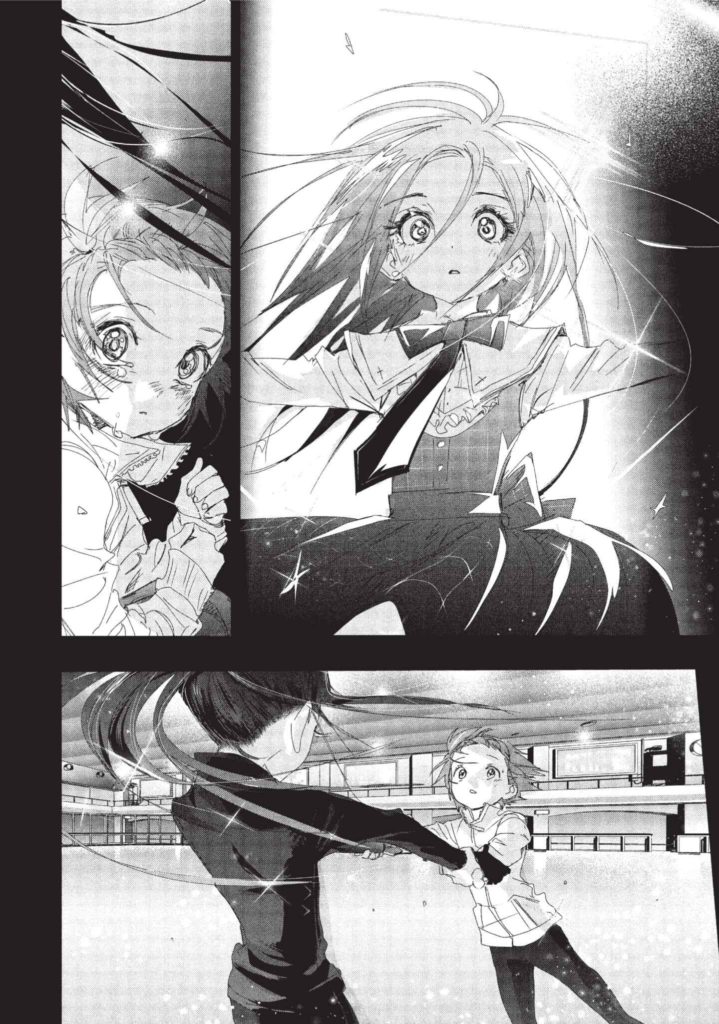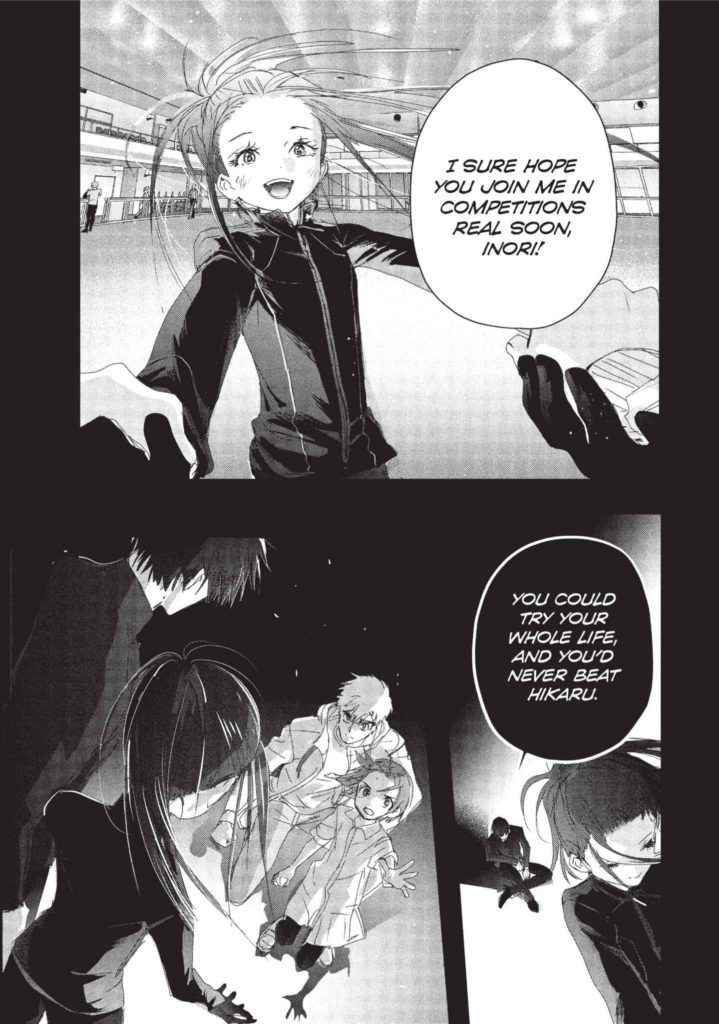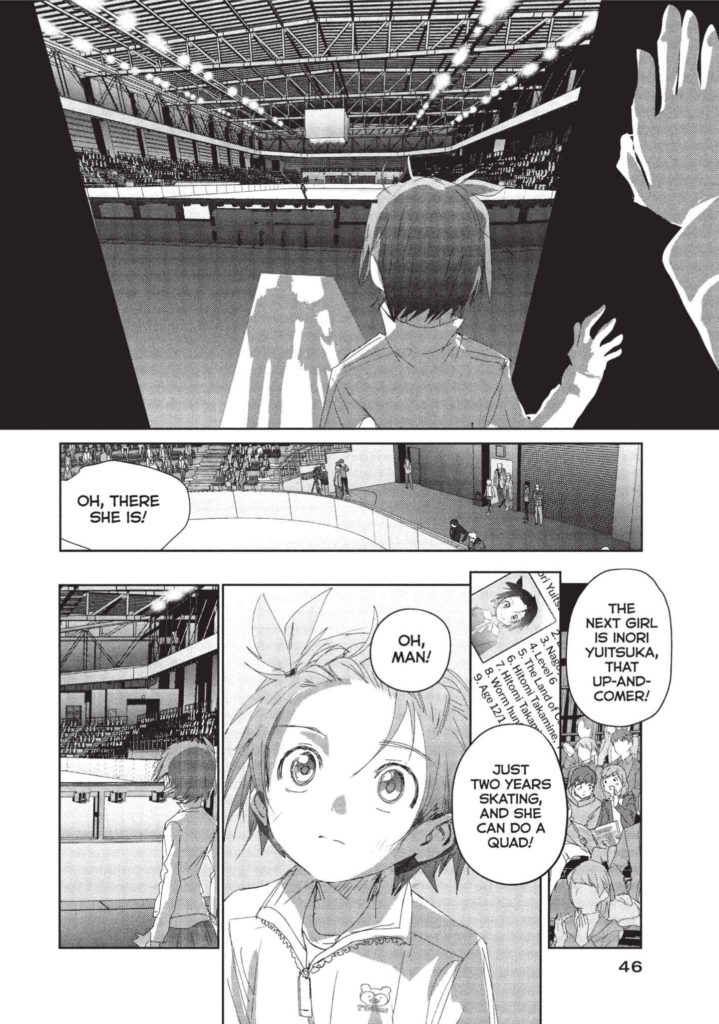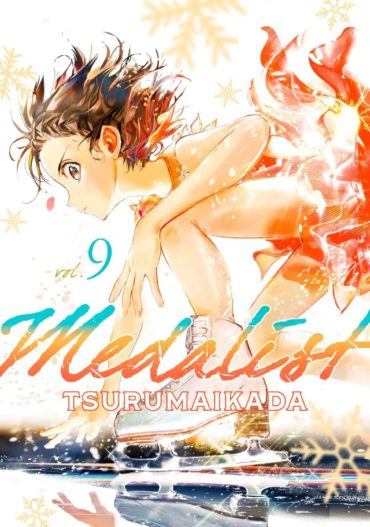Medalist Volume 9 Review
Hikaru Kamisaki has dazzled on the ice at the All-Japan Novice Championship with an impressive performance including a quad toe loop and a triple axel. For all the competitors, including Inori, who have still to deliver their programmes, she’s a very difficult act to follow. About to go onto the ice is Miku Ahiru who has resolved to end her figure skating career at the All-Japan Championship – and watching her is her coach Kohei Kamogawa, a former clubmate of Tsukasa’s, as well as Juna Shiratori, her choreographer. The rink where their club practises has announced it’s closing and Miku doesn’t want to continue skating. “We can work together as a trio,” Kohei has told Miku, “and leave behind something really great.” But as she starts her programme, she falls – and after that, it’s a struggle to carry on to the end – but somehow, she manages it successfully. It’s not until she’s come off the ice and is sitting with Kohei waiting for the results, that the enormity of it all hits her hard and she breaks down. Kohei can’t help but be reminded of the struggles Tsukasa endured as a late beginner – and Tsukasa, who’s been watching Miku, also remembers.

And then it’s Inori’s turn to compete – and there’s a quiet buzz of interest in the rink audience because her reputation as the contestant who mastered the quadruple salchow precedes her. But with so much expectation weighing on her – not least her own bold challenge to Hikaru that she’s going to beat her to gold – will the pressure prove to be too much?
Another compelling volume of Medalist brings us the impossibly high emotional stakes involved for skaters and their coaches when all the hard months of practising culminate in a few brief crucial minutes on the ice. As Miku says dazedly, “It’s just… it was all over so fast…” and in her case, there’s so much packed into those few words because she believes this to be the end of her skating career.
One of the strengths of Tsurumaikada’s storytelling is the way the agonies and ecstasies of competing in a big skating competition are brought vividly to life for the readers. Suddenly we’re ‘in’ Inori’s head as she performs her routine – with occasional switches to the reactions of those watching. It’s exhilarating and emotionally exhausting, especially when the art focuses on Tsukasa’s agonised reactions as Inori goes for the dreaded triple lutz. Even in the middle of this vital performance, Tsurumaikada takes a little time to tell us about the ‘step’ sequence in context, reminding us that even if it looks easy, it’s in no way easy to perform, quite the opposite! This doesn’t impede the mounting tension as an info-dump might in the hands of a less experienced mangaka, it actually increases it.

However, the tension doesn’t dissipate when the championship is over and the awards have been given out. Tsukasa goes for a night-time run in the rain (he runs not just to keep fit but to dissipate the pent-up feelings accrued during the competition) and then Hikaru suddenly appears. The ensuing conversation – or maybe confrontation would be more accurate – is the most telling so far. Hikaru might be in the Novice category because of her age, but she’s used to getting her own way and indulging her ‘wild child’ side because of her abilities. Tsukasa tells her she shouldn’t be out at night on her own and says he’ll take her back to the hotel. She doesn’t listen and then proceeds to speak so bluntly to him that one suspects she’s repeating what her coach, Jun Todaka, has said to her. Tsukasa is understandably taken aback – even hurt. But he recovers, saying, “Kamisaki, you may think it’s okay to be harsh when you’re speaking to an adult… but even an adult’s heart can only take so much!” and proceeds to tell her, equally bluntly, “Measuring the things other people cherish by your own values is sheer arrogance!” And then we see for a moment the adult mask she’s assumed drop away as – perhaps for the first time – she understands what he’s saying.
This conversation is an arresting and perceptive piece of writing/drawing and characterization, perhaps one of the best I’ve read in a long while – and worth picking up this volume for alone, although it hits most effectively when you’ve been through the wringer of the All-Japan Novice Championship with Inori and Tsukasa first.

The print edition of Volume 9 of Medalist again comes without any colour plates (a shame, because this seems to be the pattern with Kodansha’s series where later volumes lack colour inserts, even Blue Period). However, the trade paperback continues to showcase Tsurumaikada’s art to great effect. The translation is again by Kevin Gifford with lettering by Scott O’Brien for the print edition (the earlier digital edition lettering is by Darren Smith); everything works well and the vital conversations and verbal confrontations are very effectively conveyed. Even though the mangaka tells us there’s no room this time for bonus material, there are three pages of thanks and extra bits – and a ‘trailer’ page about Volume 10. This reminds us that Inori has now moved on up to the Junior stage where ‘You’re not making the choices – people are picking you.’
Volume 10 is already available in digital and due out in print in September.
Medalist © TSURUMAIKADA/Kodansha Ltd.
Our review copy from Kodansha was supplied by Diamond Book Distributors UK.


